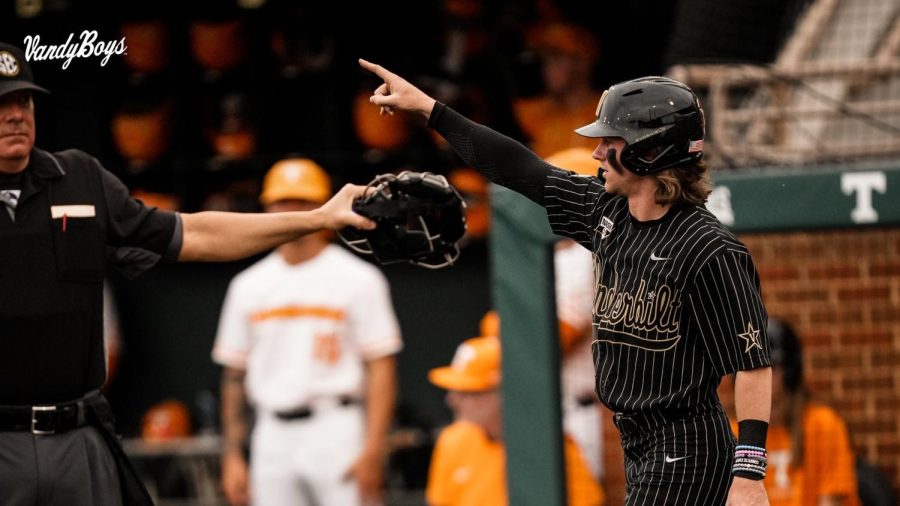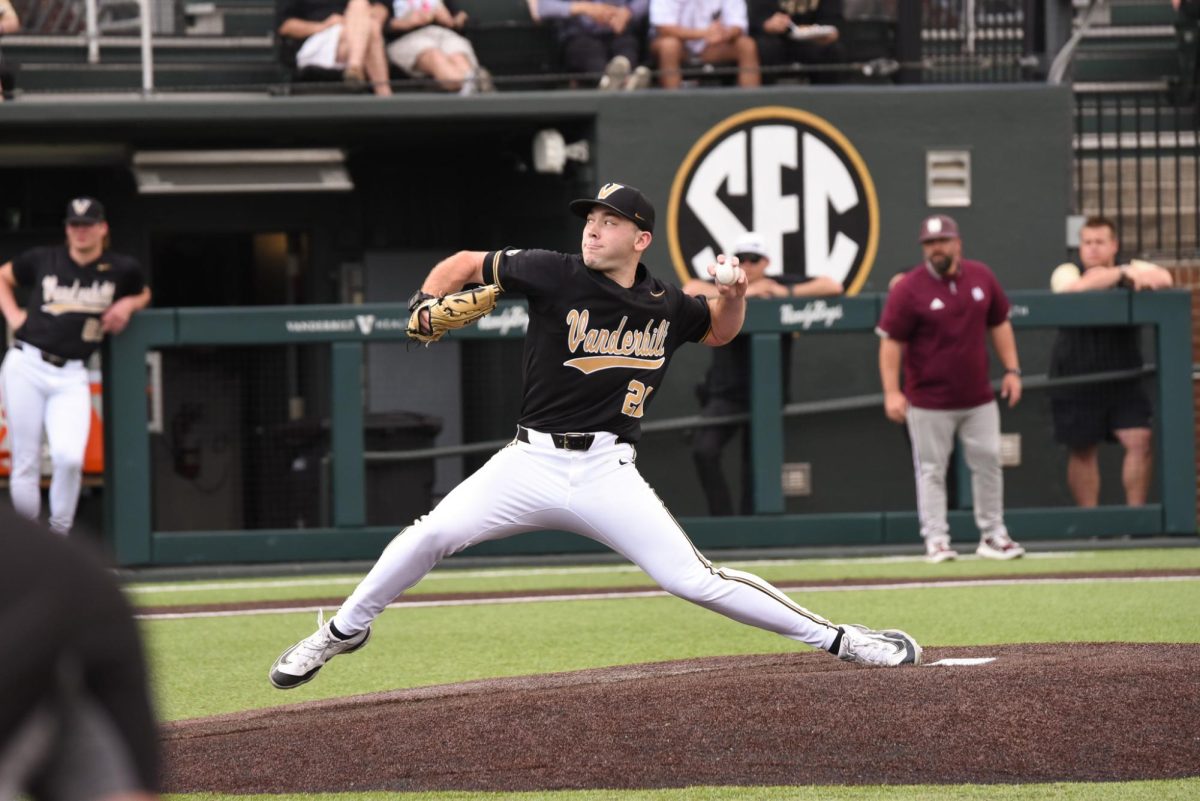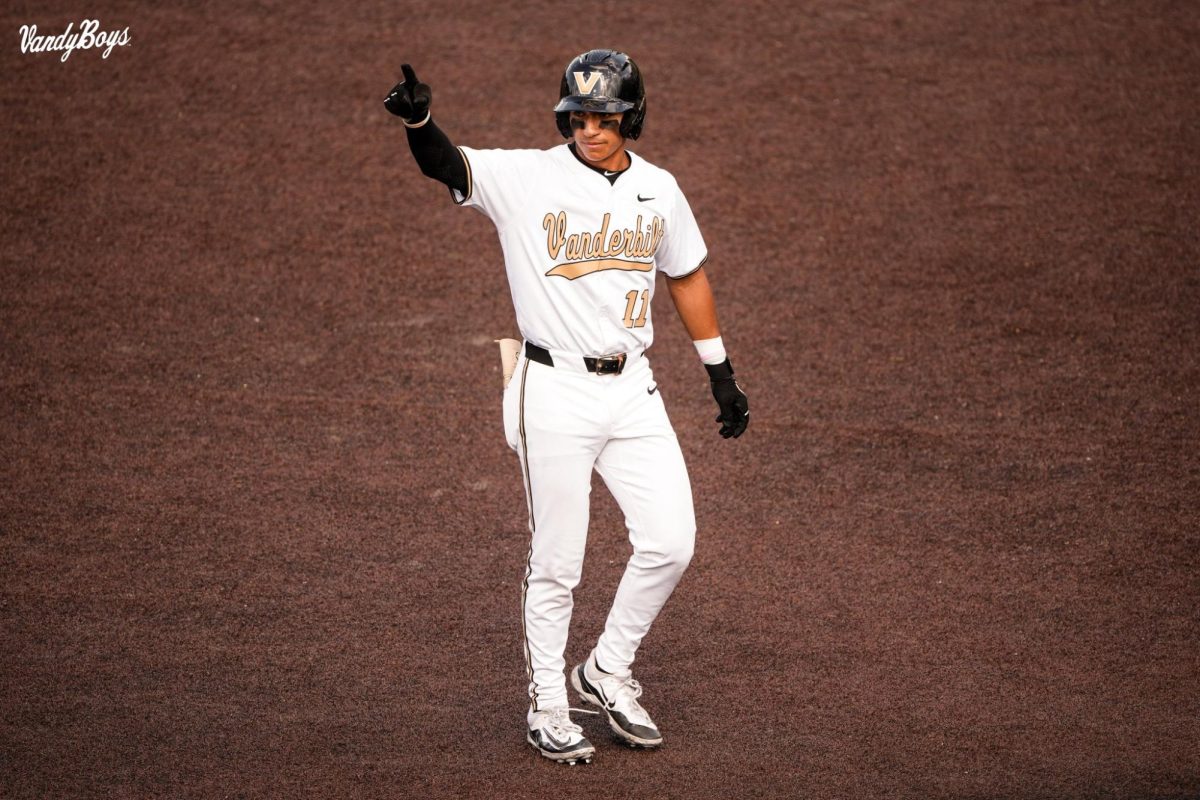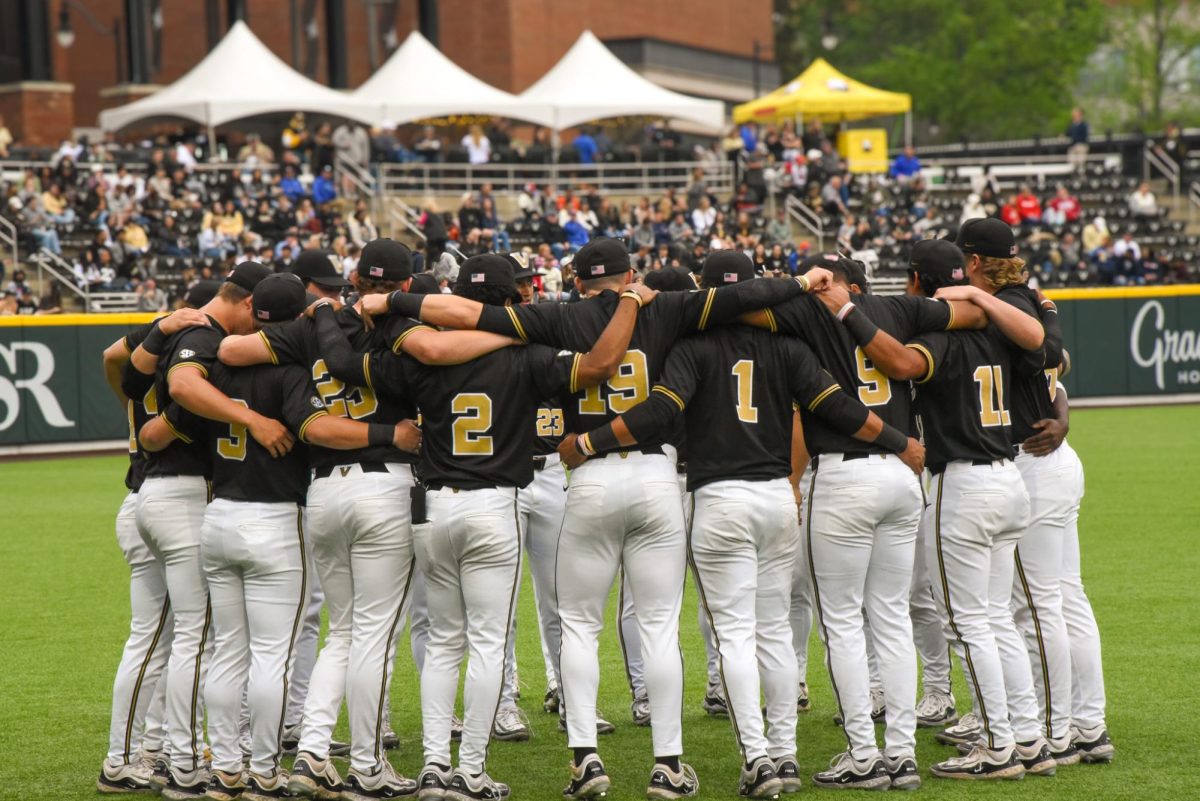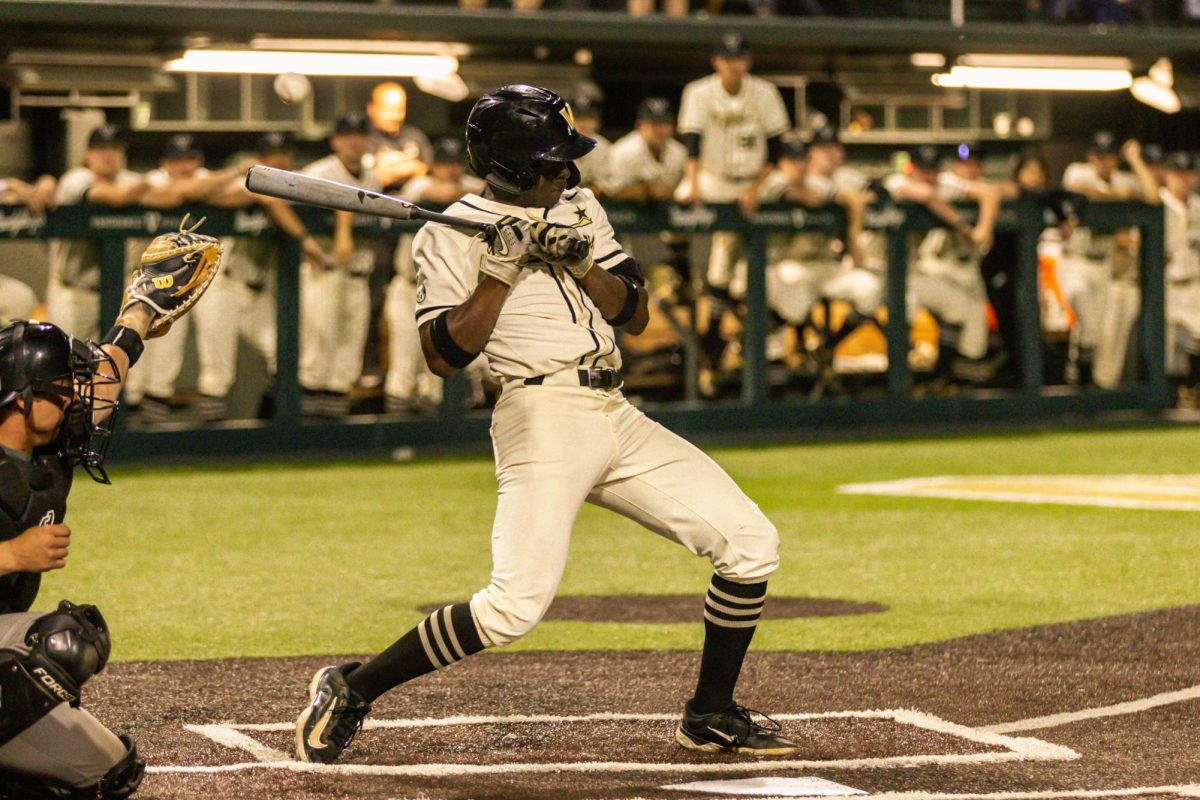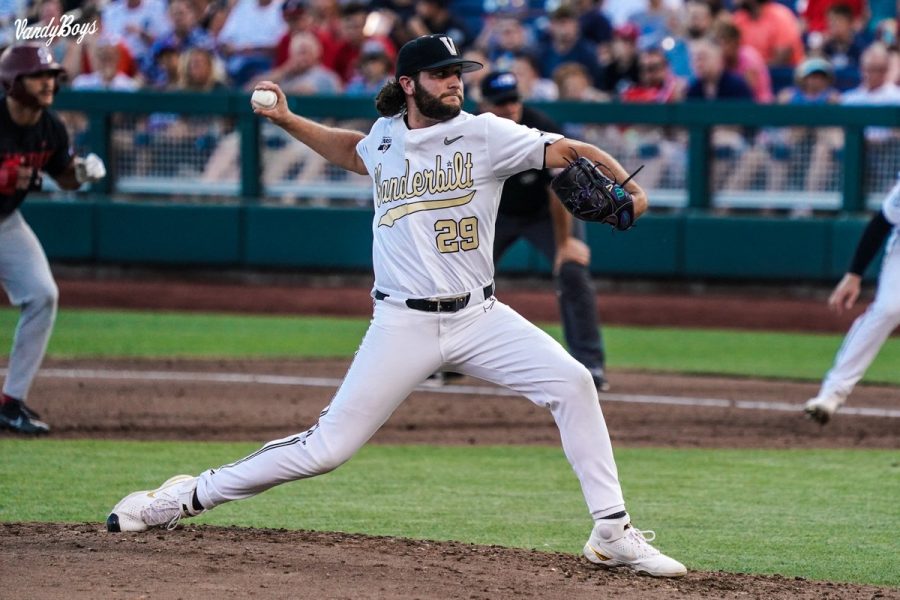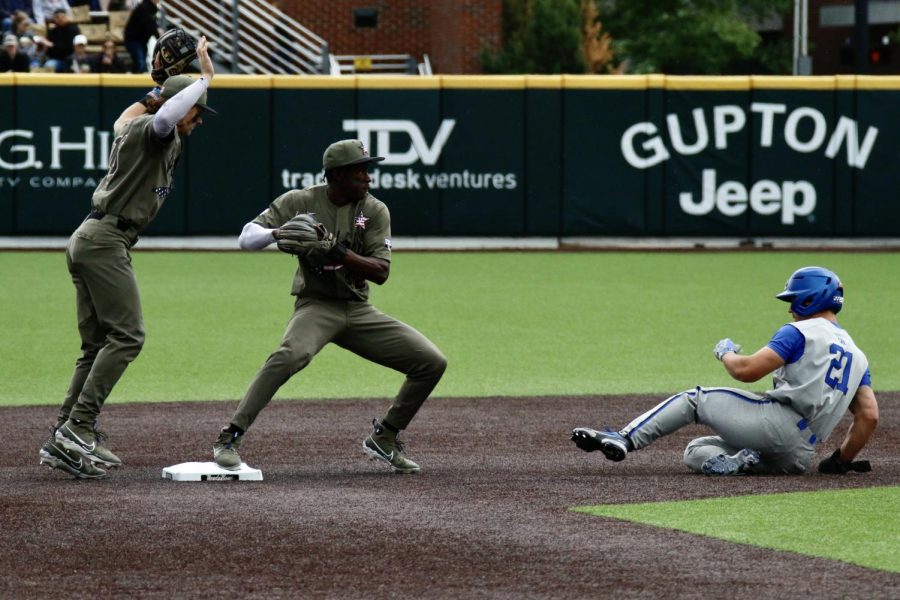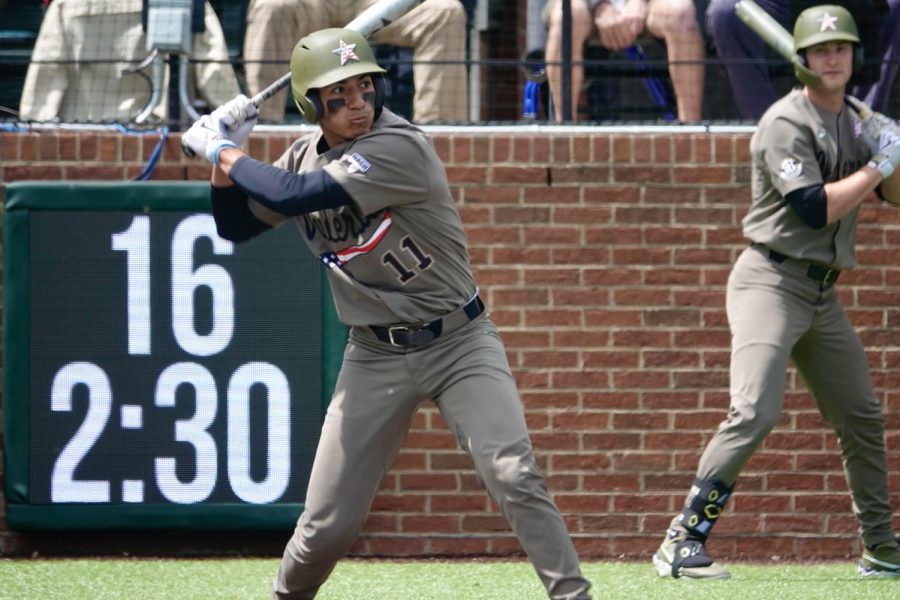For the second straight season, Vanderbilt was swept by its arch-rival Tennessee over the weekend. It’s the team’s first lost series of the season, and, combined with the April 18 loss to Indiana State, puts the Commodores on a four-game losing streak. It’s obviously the worst week of the season, but the team’s sloppy playing against Missouri and underwhelming performance against South Carolina indicated that it would slow down. With that being said, here are some of the problems that led to a disastrous trip to Knoxville.
Slowdown at the plate
As if the pitching situation wasn’t concerning enough, the Commodores generated very little at the plate against an albeit very strong Tennessee staff. The weekend was perhaps epitomized by Davis Diaz, who went 0-for-6 in Friday’s 12-inning loss before being dropped to eighth in the batting order in Corbin’s first major lineup change in over a month. The change was foreseeable: Diaz ranks second-to-last among the main starters in batting average (.243) and last in slugging percentage (.378). Matthew Polk moved up to the two-spot for the Saturday and Sunday games for what was essentially a straight swap.
Diaz was far from the only one who struggled over the weekend. The Commodores posted a .220 batting average as a team over the series and only plated three runs in 12 frames on Friday. RJ Schreck’s solo shot Saturday was the only run scored against Chase Dollander on Saturday. Vanderbilt plated five late runs Sunday, but they came after the game was essentially over. With another top-class pitching team in Kentucky coming to town next weekend, the bats will need to come back soon.
Too many homers
Truthfully, the VandyBoys did not do much of anything well this week. However, the top culprit on the list of issues was allowing far too many home runs. I alluded to this same problem last week when South Carolina took it out of the park eight times. This time, Tennessee hit nine over the wall at Lindsey Nelson Stadium.
The most frustrating part of this outburst was its predictability. The Volunteers aren’t like Vanderbilt. They don’t have the sort of balanced lineup that can beat teams multiple ways, play small ball or string singles together like others. Hitting home runs is about their only game plan ― but they do it well. Tennessee ranks second-to-last in the SEC in batting average and is in the bottom four in runs per game but is third in home runs. Vanderbilt’s heavy pitch-to-contact approach can be very strong, but it has its flaws. The staff may have gotten away with leaving pitches middle-middle against teams like Mississippi State and Georgia, but more powerful offenses like Tennessee can — and did — make it pay.
Pitching depth questions
In the transfer portal era, it’s significantly harder for teams like Vanderbilt to hoard pitching depth. It’s just not realistic to expect a college team to have 10 reliable shutout pitchers available. However, Vanderbilt’s lack of arms is starting to look like a real issue compared to the upper-echelon teams.
For starters, we still don’t know what’s going on with Hunter Owen. He’s missed the last two straight starts with what was initially categorized as “fatigue,” and Tim Corbin has been very ambiguous about the southpaw’s state since. Whether there’s an injury the team is hiding or some other issue, Vanderbilt is really missing Owen’s presence on Saturdays.
Putting aside Nick Maldonado (more on him later) and Ryan Ginther, both of whom have been solid, the Vanderbilt bullpen has been stretched thin recently with discouraging results. Bryce Cunningham’s recent weekend starts have been ugly. He shipped nine runs on Saturday while recording only two outs, ballooning his ERA to an abysmal 6.10. Sam Hliboki ― who’s pitched the fifth most innings on the team ― was hit hard after coming after Cunningham on Friday. His ERA sits at an even higher at 6.91. With these two inning-eaters struggling, Corbin and Scott Brown have been forced to pull midweek starter Greysen Carter into the weekend fray. Unfortunately, the result from that decision was the emergency tandem plan of back-end pitchers that allowed 10 runs to Indiana State.
With this situation in mind, it’s probably good news that Vanderbilt has no midweek game this week for final exams. The Commodores can reset their bullpen and hopefully go into next week’s Kentucky series with more options than this week.
Nick Maldonado overused?
One of the more eye-popping decisions of the weekend was to stretch closer Nick Maldonado for an attempted five innings on Friday, three of which came after he blew the save in the bottom of the ninth. Maldonado ended up with 60 pitches and allowed the walk-off in the bottom of the 12th that handed the opener to the Volunteers. As bizarre as it was to see in real time, I’ve come to understand the move the more I’ve thought about it.
Maldonado has made long saves before, so bringing him in in the eighth wasn’t unusual. Once he had pitched those two innings and given up the lead, he was probably already burned for the rest of the series and until Kentucky. Given that, there was no real reason to save his arm.
Unfortunately, the rest of the logic relies to some degree on the lack of trust Corbin has in the aforementioned struggling bullpen. Maldonado’s command and velocity weakened as his outing progressed, but Corbin still viewed him as the best option in the highest leverage spots. The options were to either keep the guy with a 0.47 ERA on the mound or pick someone less reliable out of a currently shaky and poorly rested bullpen, given that they would probably also have to cover at least four innings in a day game the next day.
Long story short, I understand Corbin’s thinking that went into leaving Maldonado in that long. With all the incredible outings the senior has put in for Vanderbilt over his college career, I’m willing to give him a pass for one bad one. Not scoring on offense for seven innings is a recipe for a loss, struggling bullpen or not.
Holton’s bounceback
As grim as the outlook may be after a bad week, I wanted to close with a bit of optimism from Carter Holton’s outing on Friday. Holton was last seen in his return from injury against South Carolina on April 15, allowing four runs before getting the hook with just two outs on the board. At the time, Corbin dismissed concerns that Holton had been re-injured. After the sophomore lefty threw 92 pitches in six innings while allowing only one run, it’s safe to say that Holton is back to 100%. While we may not know the status of Owen or Andrew Dutkanych IV, the ability of Holton and Devin Futrell to pitch into the seventh and eighth will be key to keep Vanderbilt in games. In a weekend in which nothing else really went right, Holton’s start should give Vanderbilt fans a sigh of relief.
The Commodores will play the first of three against Kentucky on Friday, April 28, at 6 p.m. CDT at Hawkins Field.

